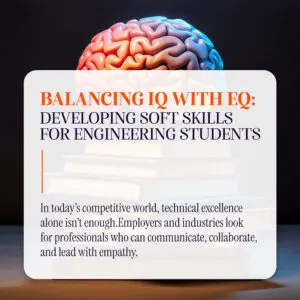
The most striking analogy of manufacturing solar photovoltaic panels is with the natural phenomenon of photosynthesis, where plants entrap small packets of photons to convert into chemical energy that, in turn, is oxidised into mechanical energy as and when plants need them. This led the scientists to design PV cells that trap, store and convert light energy of the Sun into chemical energy inside the semi-conductor. As a result, we obtain this energy as a stream of electric current powering buildings and machines.
Whether exploring energy-efficient building designs, optimising power electronics, or developing smart grid solutions, understanding solar PV technology is crucial for engineers and architects alike.
This blog is meant to explore the science, technology and practical applications of solar PV, making it easier to see how this transformative technology fits into the future of engineering and architecture.
Fundamentals of Solar PV Technology and Power Conversion
As discovered by Albert Einstein, when the photons from solar rays strike a semi-conductor material, typically silicone – the electrons get excited and generate a continuous flow of electric current. This photoelectric effect works behind the fundamental operation of a PV system, i.e. Solar Cell, as it converts sunlight into direct current (DC) electricity.
However, since most electrical grids and home appliances run on alternating current (AC), a crucial step in power conversion is performed by an inverter, which transforms DC into AC using pulse-width modulation (PWM) techniques and high-frequency switching circuits. Power conversion also involves maximum power point tracking (MPPT) algorithms, optimising voltage and current levels to ensure the highest efficiency.
Electrical engineering is key in integrating solar PV technology into buildings, encompassing power electronics for voltage regulation, transformers for load distribution, grid synchronisation to maintain frequency stability, and protective relays to prevent overloads.
Grid Integration and Energy Storage
The synchronisation of inter-dependent phases is of utmost importance while maintaining grid stability, as they optimise the voltage and frequency of solar-generated AC electricity with the grid.
The power factor correction and reactive power compensation techniques help prevent fluctuations caused by variable solar output. The inverter control systems use advanced phase-locked loops (PLLs) to ensure balance with the grid. Energy storage systems (ESS) are crucial in optimising power flow and mitigating solar energy’s intermittency. Lithium-ion batteries, flow batteries, and supercapacitors store excess energy generated during peak sunlight, ensuring continuous power supply during low or high-demand periods.
Integrating battery management systems (BMS) ensures storage units’ safety, longevity, and optimal performance by regulating voltage levels and preventing overcharging or deep discharging.
Applications and Future Trends in Solar PV Technology
Notably, perovskite-silicon tandem cells have achieved a record efficiency of 28.6% in commercial-scale applications, significantly reducing the space required for solar installations.
Japan’s substantial investment of $1.5 billion in ultra-thin, flexible perovskite solar cells aims to diversify energy sources and enhance energy security, challenging existing market leaders. Additionally, deploying high-altitude solar plants, such as the 5,228-meter-high installation in Tibet, demonstrates the potential of solar technology in diverse and challenging environments.
OmDayal Group of Institutions: Laying the Foundation for Successful Solar PV Projects in Future
As solar PV technology continues to evolve, our commitment to technical excellence and sustainable engineering ensures that the students play a key role in shaping an energy-efficient future. By fostering research in perovskite cells, smart grids, and energy storage advancements, we prepare young graduates to tackle real-world challenges in renewable energy deployment.
Sources:
- https://www.energy.gov/eere/solar/solar-photovoltaic-technology-basics
- https://www.energy.gov/eere/solar/photovoltaics#:~:text=Photovoltaic%20(PV)%20technologies%20%E2%80%93%20more,a%20decarbonized%20U.S.%20electric%20grid
- https://www.e-education.psu.edu/eme812/node/608#:~:text=Copper%20Indium%20Gallium%20Selenide%20(CIGS,demonstrate%20good%20resistance%20to%20heating




